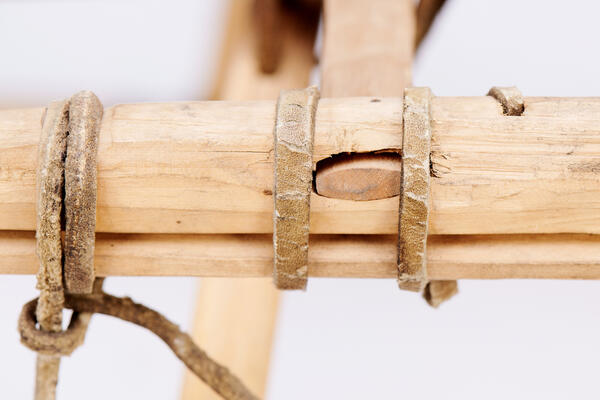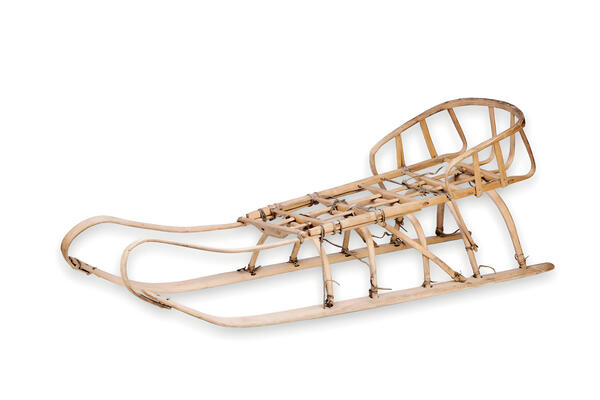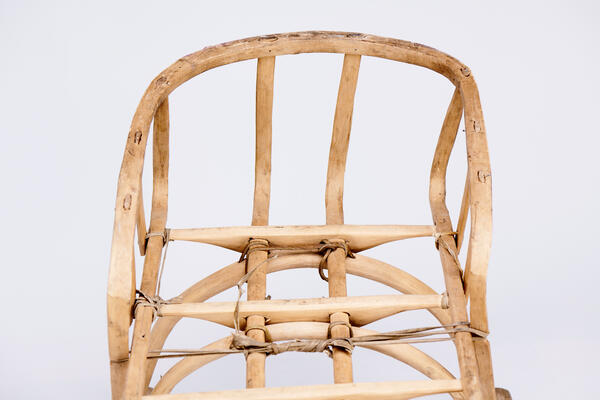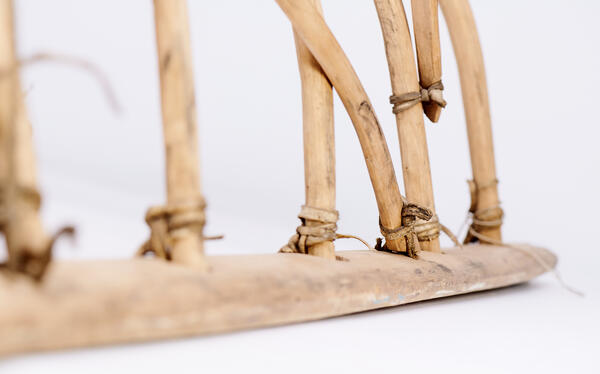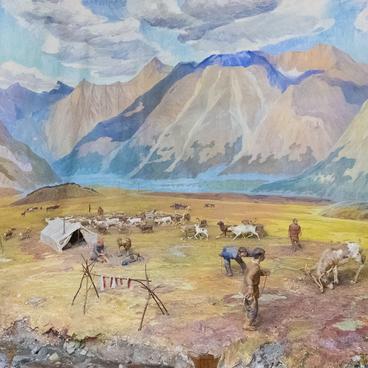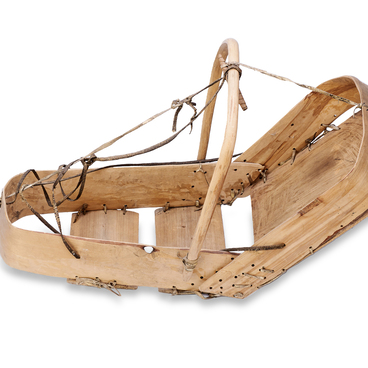Reindeer herding was the main occupation of the nomadic Koryaks — Chavchuvens. Reindeer were transport animals used specifically for pulling sleds, while riding was not practiced. For this purpose, castrated male reindeer were specially trained. Sledding began with the first snowfall.
Koryak people used two types of reindeer narty sleds: to drive passengers and to carry cargos. They had different designs and methods of reindeer harnessing. Passenger sleds most often had six low arched poppets fixed on the two runners. A platform made of two longitudinal and six (by the number of poppets) transverse slats was attached to them. In the rear part of the platform there were sidewalls made of planks. All parts of the sled were connected only by means of straps.
On average, the length of a narty sled varied between 175 and 215 centimeters, and the height usually did not exceed 35 centimeters. Two reindeer were harnessed into a passenger sled. The harness of each reindeer consisted of a loop strap, which was thrown over the left shoulder of the animal, catching its right front leg. A pulling strap was attached to the loop strap, which ran along the right side of the reindeer. The end of the pulling strap was attached to the platform of the sled.
The right reindeer was the “front-runner”; it moved slightly ahead of the left reindeer. The driver sat on the sled with his feet on the runners. A special thin, slightly curved rod with a bone tip was used to prod the reindeer. When descending from the mountains, a bone hook was needed, which was tied to the sled. To slow down, the driver only needed to place his foot on this hook.
Due to the fact that both
reindeer were pulled from the right, the sleds were positioned slightly to the
left of them, so the driver could see the path ahead of him, and avoid being
hit by snow kicked up by the reindeer’s hooves. When descending from the
mountains, the sleds, being on the side, did not interfere with the reindeer’s
movement, but restrained their rapid descent. Nomadic Koryaks had different
men’s and women’s sleds. The exhibit from the museum’s collection is a
children’s sled made in the second half of the 20th century; it is much shorter
than the adult sled, just 108 centimeters long.

